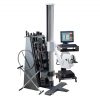
Hand Physical Therapy Exercises to Boost Mobility and Recovery
Treatment GuidelinesDiscover effective hand physical therapy exercises designed to enhance strength and flexibility, aiding in recovery and improving daily hand function.
Your hands are remarkable instruments that facilitate countless daily activities-from preparing meals and typing emails to playing with your grandchildren. When hand function becomes compromised through injury, surgery, or conditions like arthritis, even the smallest tasks can turn into formidable challenges. Hand physical therapy exercises provide an evidence-based approach to regaining strength, flexibility, and precision control.
Whether you’re managing arthritis, recovering from surgical intervention, or rehabilitating after trauma, these clinically supported exercises can help restore function, reduce discomfort, and preserve your hand health for years to come. Let’s explore the therapeutic interventions that can transform hand function and enhance daily independence.
Why Hand Physical Therapy Exercises Matter
Consider the frustration of struggling with a jar lid or feeling your grip weaken while holding a cup of coffee. Hand mobility is not just about convenience—it represents functional independence and quality of life. Clinical evidence demonstrates that regular hand exercises can improve grip strength by up to 30% in adults with arthritis, significantly reduce joint stiffness, and help protect joints from further deterioration.1 For instance, researchers at Harvard Medical School found that gentle movements like finger stretches can slow arthritis progression substantially and enhance overall hand function.2
Hand therapists frequently incorporate these exercises into home management programs. The literature consistently emphasizes the critical nature of exercise adherence. One study states, “Frequent, low-intensity exercise is more effective for long-term hand function recovery than sporadic, high-intensity efforts”.3
This approach facilitates reduced stiffness, progressive strength development, and preservation of functional abilities to perform daily tasks like meal preparation, dressing, and digital device manipulation. Collaborating with a Certified Hand Therapist ensures interventions are tailored to your specific functional deficits, transforming incremental progress into meaningful gains.
Before You Begin: Safety & Preparation Tips
Before starting any exercise routine, consult a physical or occupational therapist who preferably specializes in hand therapy and is a Certified Hand Therapist—especially if you’ve had surgery or severe pain. Here are some tips to get you started:
- Warm Up First: Soak your hands in warm water or use a heating pad for 5–10 minutes to loosen up your muscles. This helps increase blood flow and makes your hands more flexible.
- Optimal Frequency: Aim to do these exercises daily. Consistency is the cornerstone of seeing improvements in strength and flexibility. Start with 5-10 repetitions once daily, ceasing immediately if you experience significant discomfort, and consult with your therapist. Gradually progress to three sessions a day as tolerated.
- Use Simple Tools: Graded resistance tools such as a stress ball, therapy putty, or a soft foam ball provide varying levels of difficulty, making it easier to adjust based on your comfort and progress.
For more detailed guidance, explore our hand therapy resources.
Best At-Home Hand Physical Therapy Exercises to Try
Finger Lifts and Spreads
Sharpen your finger agility, flexibility, and dexterity for precision tasks like buttoning a shirt or assembling intricate electronics by rebuilding control in the joints of the fingers.
- Place your palm flat on a table.
- Lift one finger at a time, holding for 3 seconds.
- Spread all fingers apart like a starfish, then slowly bring them back together.
Repeat: 10 times per hand.
Why it works: This exercise helps combat stiffness from arthritis or inactivity by gently stretching tendons.4
Fist to Fan
This exercise is ideal for loosening stiff joints and building flexibility over time, helping you move smoothly through daily tasks such as grasping a cup or lifting groceries.
- Start with an open hand, fingers straight.
- Slowly curl fingers into a soft fist, then fan them out wide.
Repeat: 10 times per hand.
Tip: Imagine squeezing a sponge gently—no white knuckles!
Thumb Flex and Touch
This hand physical therapy exercise is crucial for building strength in opposition movements, where the thumb and fingers touch. It improves pinching power when doing fine grasping activities like turning a key or picking up small objects.
- Hold your hand upright.
- Touch your thumb to each fingertip, forming an “O” shape.
- Hold each touch for 5 seconds.
Repeat: 5 cycles per hand.
Why it works: This mimics daily tasks like turning keys or holding utensils.5
Stress Ball Squeeze
Squeezing a stress ball strengthens your grip and builds endurance, so you can easily carry heavy grocery bags or hold a toddler’s hand securely.
- Hold a stress ball or ball of therapy putty.
- Squeeze firmly, then release halfway.
- Keep a slow, steady rhythm.
Repeat: 15 squeezes per hand.
Bonus: Softer putty is ideal for arthritis; increase from soft to firmer resistance when aiding post-injury recovery.2
Wrist Rotations and Extensions
Developing your wrist’s full range of motion supports precise finger movements and hand coordination, which are key for daily tasks. After weeks in a cast, these exercises help reverse the expected stiffness and allow you to regain flexibility lost during immobilization.
- Rest your elbow on a table, hand up.
- Slowly rotate your wrist clockwise, then counterclockwise.
- Next, bend your wrist up and down like a waving motion.
Repeat: 10 rotations, 10 bends per hand.
Tip: Keep movements small initially to avoid strain and slowly increase the range of motion.4
Functional Hand Movements for Daily Life
Turn everyday tasks into hand physical therapy exercises: wring out a towel to build grip strength, button a shirt to sharpen finger control, or stir a pot of soup to stabilize unsteady hands. These ‘hidden’ hand exercises make progress feel effortless and empowering.
These activities aren’t just chores – they’re foundational occupational therapy goals designed to:
- Boost hand strength for lifting groceries or carrying bags.
- Refine fine motor skills for tasks like turning keys or using phones.
- Reduce stiffness or pain by gently improving joint mobility.
For more targeted progress, therapists use tools like the Simulator II, a clinical device that mimics real-world challenges like twisting doorknobs, gripping tools, or swinging a racket. This professional rehabilitation device provides gentle, controlled exercises for the fine movements of the hand as well as real-world task simulation. Unlike simple rehab equipment, the Simulator II automatically tracks and displays your improvement with progress reports that are easy to understand.
Specialized hand therapy clinics may offer tools like the Capri, a therapeutic gaming device specifically designed to target the hands and arm. Capri’s therapeutic gaming makes your hand physical therapy exercises fun, challenging, and effective. Whether you’re recovering from a hand injury or a neurological condition, the Capri offers customizable activities to support your progress. Watch how it works below:
Additionally, check out our hand rehabilitation tools and patient engagement hand therapy webinar for more innovative solutions.
Staying Consistent with Your Hand Therapy Routine
Consistency beats intensity! Set small, meaningful goals and track progress with a checklist or app. Pair exercises with daily habits—stretch during coffee breaks or squeeze a stress ball while watching TV. Partner with your therapist to adjust your plan as you improve and celebrate milestones, even the small ones. Progress isn’t linear, but showing up daily builds strength that lasts.
Making a habit of these exercises can transform your daily life. Start with just a few minutes each day, gradually increasing duration as your hands grow stronger and more flexible.
When to See a Professional
If you experience sharp pain, swelling, reduced motion, or no improvement after 2–3 weeks, it is time to consult an occupational or physical therapist who specializes in hand therapy.
Stronger Hands Start with Simple Daily Movement
Stronger hands thrive on daily motion—gentle stretches and squeezes today mean easier jar-opening, steadier writing, and less pain tomorrow. Progress lives in tiny, consistent efforts.
Hannah le Roux, OTR/L, CHT, is an experienced Occupational Therapist and Certified Hand Therapist with over two decades of international practice across South Africa, the United Kingdom, and the United States. Now, Hannah leverages her extensive expertise as a consultant, guiding fellow therapists in clinical patient care strategies and authoring insightful articles.

